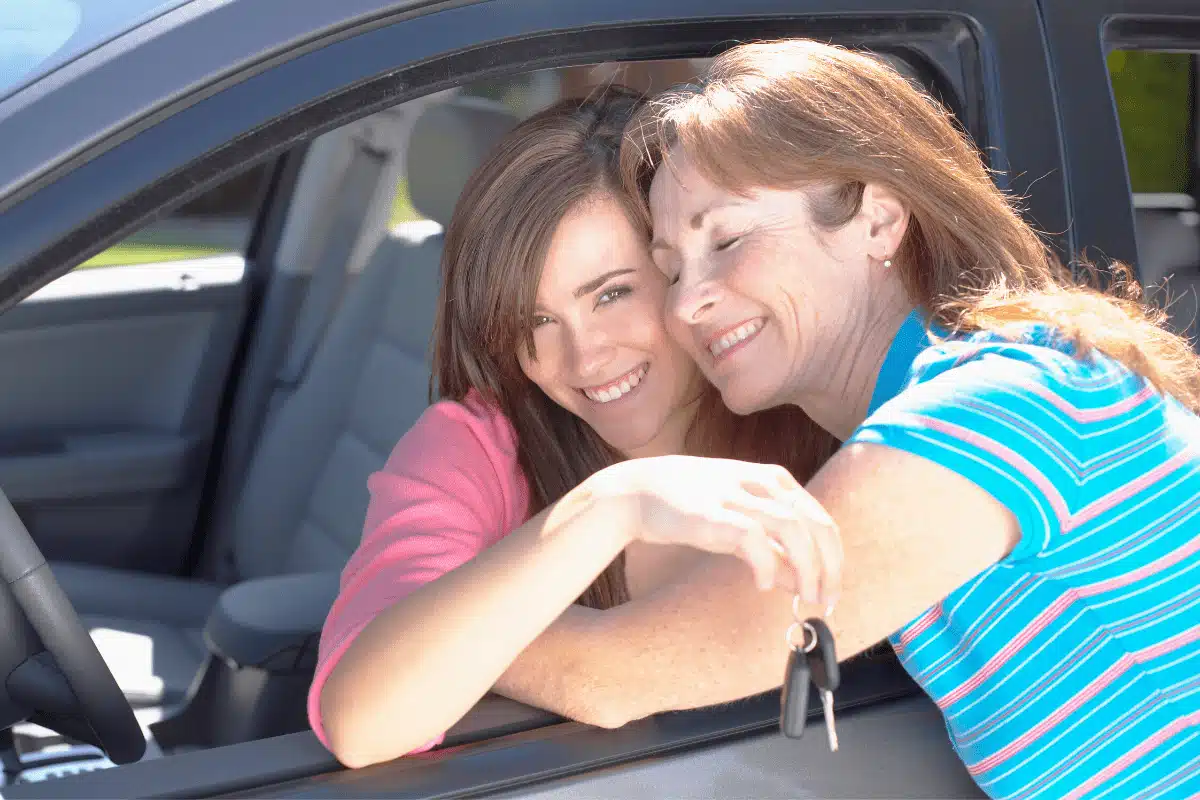Home » Blog » Car » Cars: Understanding Them » Finding the Best Car for Teenagers: A Buyer’s Guide
Categories
Tags
animal welfare
breed profile
buying a car
buying a pet
Car
car accessories
car care
car features
car insurance
Car safety
car sales
car service
cat
cat behaviour
cat body language
Cat Breeds
cat food
cat insurance
comprehensive car insurance
Dog
Dog Behaviour
dog body language
Dog Breeds
dog food
Dog Insurance
dog training
eco friendly cars
Kitten
New Car
pet accessories
pet activities
Pet Adoption
pet breeders
pet days of the year
pet fun stuff
Pet Health
pet insurance
pet parenting
Pet Safety
pet services
Puppy
rescue pets
road safety
road trip
safe driving
Recent Blog:
Facebook Posts
2 days ago
Growing old sometimes means we can’t take care of pets anymore. Find out some advice on what to do when this happens:![]()
![]() Senior Pet Parents – Contingency Plans for Your Pet – bit.ly/44bzwkS
... See MoreSee Less
Senior Pet Parents – Contingency Plans for Your Pet – bit.ly/44bzwkS
... See MoreSee Less
Senior Pet Parents' Contingency Plans for Pets
www.pd.com.au
Sometimes senior pet parents need more downtime. For older pet owners, this can be tricky to navigate if their dog or cat is full of beans and wants to4 days ago
Before you rev up the engine, let’s run through a checklist of things to do before starting your car. Not only do these steps ensure your safety (and that of others around you), but they also help in maintaining your vehicle's longevity.![]()
![]() Driving Tips: Your Checklist Before Starting Your Car -
... See MoreSee Less
Driving Tips: Your Checklist Before Starting Your Car -
... See MoreSee Less
Driving Tips: Your Checklist Before Starting Your Car
www.pd.com.au
Heading out for a drive? Hold up a second! Whether you're dashing off to work, running errands, or embarking on a road trip adventure, there are a few1 week ago
Are intestinal worms setting up camp in your dog’s gut without paying rent? Here’s how to spot the main culprits and get rid of them too:![]()
![]() Preventing, Identifying and Treating Intestinal Worms in Dogs - bit.ly/43YjCKu
... See MoreSee Less
Preventing, Identifying and Treating Intestinal Worms in Dogs - bit.ly/43YjCKu
... See MoreSee Less
Preventing, Identifying and Treating Intestinal Worms in Dogs
www.pd.com.au
Intestinal worms, such as roundworms in dogs are one of the least glamorous topics on the planet. These intestinal parasites that basically use our dogsIt’s the moment that fills every parent with pride and dread. Your seventeen-year-old has passed their driver’s test and now it’s time to choose their first set of wheels. So, what is the best car for teenagers?
For your teen, this milestone is a rite of passage. A doorway to freedom and independence. For some, it’s a key enabler for earning an income. Always important but perhaps even more so in the midst of this challenging jobs market heavily influenced by COVID-19.
Yet for many parents, finding the best car for teenagers is a time of white knuckled anxiety. You might find yourself suddenly acting like a toddler when it’s time to hit the car yards, coming up with every excuse you can think of to delay going. Are you ready to let your wanna-be adult head down the highway in a tonne and a half of metal?
We get it (we’ve been there too!). So, we’ve created this buyer’s guide to help you find the best car for your teenager that’s both striking and safe. Read on.
Agree on the Details Before You Go
Okay. We know this is a stretch. But having clear expectations about the responsibilities of car ownership is going to save a lot of stress later down the track.
After all, this isn’t like the Ziggy the poor goldfish. If they neglect their wheels they’ll be flushing far more than their finned friend down the toilet. Before you start browsing the best cars for teenagers you should agree on:
Who’s paying for the car?
Has your teen saved any money for their car? If not, are they taking on all the debt repayments or is there an expectation you’ll split them? If the latter, agree to any private car loan payments up front – the amount, the timing and whatever else needs to be outlined pre-purchase.
Where, when and who?
We all know driver distractions are deadly. Especially so for new, inexperienced drivers. Time to decide how many passengers they’re allowed to carry. Did you know that in some states a P1 driver is prohibited from driving with more than one passenger who is under 21, between 11pm and 5am?
Likewise, what’s your stance on driving holidays? Can they book a road trip with friends in the first week of car-ownership? Or would you prefer they chalk up some road experience locally first? Discuss your expectations up front to avoid conflict later.
Protecting the driver (and car)
When it’s time to compare insurance, look at all the inclusions your teen might need, such as roadside assistance. You’ll be pleased to know our comprehensive car insurance comes with a range of additional benefits for your peace of mind, such as*:
- A new car (if yours is less than 12 months old), or the insured value for it, if it’s stolen or written-off.
- A hire car if yours is stolen (yes!)
- Free windscreen cover – no excess to pay for damage to your vehicle’s windscreen or window glass if you opt to repair rather than replace
- And more
* at the time of writing
Who’s responsible for petrol, maintenance and servicing?
Teaching your ‘P-Plater’ to regularly perform a basic oil, water and tyre pressure check will encourage them to get to know their car (and recognise when something’s not right). They’ll also save some hard-earned dosh by potentially catching any issues early and having their car run in a more eco-friendly fashion. Plus, a well-maintained car is more likely to keep its value when it comes time to sell.
What about incidental costs? If they get a ticket? If they get a tyre puncture? Will they be financially equipped to handle these responsibilities?
The type of car you buy can have an impact on these things.
Buying a Teen’s First Car: New or Used?
Keeping picky teens happy can be a challenge. As a low-income, higher risk driver, your teen will need to weigh up affordability and safety as well as style. The second hand cars vs new decision will likely be a big one.
Luckily, when it comes to teens who want a turbo-charged set of wheels, the laws will help you protect them. If your new driver makes a bee-line for the latest top of the range new WRX STI (which most couldn’t afford anyway!), then you’ll need to give them a refresher.
Many states have forbidden ‘P-Platers’ from driving high performance cars (without an approved exemption) because inexperienced drivers are more likely to be killed or injured in an accident.
Also, some insurers won’t insure teenagers with high performance cars because they are considered high risk.
Do your research, including checking the laws for your state or territory.
Now we’ve set your mind at ease there, let’s move on to our new vs used checklist to help you both weigh up your options.
** Buyer’s tip **
Electronic stability control, designed to control a skid, was mandated on all updated models from late 2011 and on all other vehicles from November 2013. To check if a car has ESC start the car and check the warning lights that temporarily illuminate in the instrument cluster. The ESC light is usually yellow with a car with crossing skid marks. Dealers must provide a statutory warranty on used cars for three months or 5000km. There are exceptions, e.g., the warranty applies only to cars up to 10 years old with less than 160,000km.
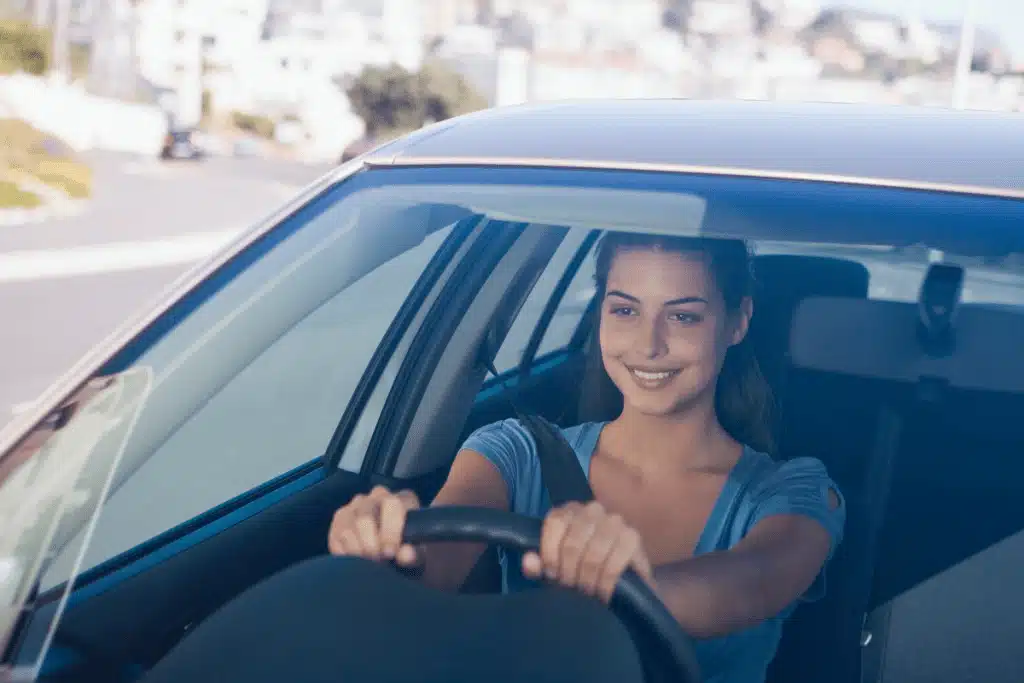
New Cars – Best Car for Teenagers
The pros of buying a new car:
- Latest in safety tech
- Latest in car features and tech
- Reduced ongoing maintenance costs
- Latest styles, shapes and eco options
- Easier to get insurance for new models
The cons of buying a new car:
- Higher cost of purchase (and potential debt with you as guarantor)
- Ongoing higher costs of car payments on lower income
- Greater risk of loss/financial burden if car is damaged/written off (compare insurance options to make sure they’re covered)
Tips for buying a new car:
- Look at small to medium sized cars with a modest price tag (up to $20k) to get the best from budget vs safety
- If you can (and your teen can drive one) opt for a manual. You’ll save a couple of thousand up front
- Look past flashy features and extras – consider what’s really needed
One more tip: check out each potential car’s safety rating before you make a decision. These ratings should be a part of your decision criteria – safety is paramount on the road, especially for young drivers.
Used Cars – Best Car for Teenagers
The pros of buying a used car:
- Budget-friendly upfront cost (potential for much smaller debt)
- Range of features available (check the laws on use of Apple Carplay and Android Auto)
- Lots of modern styles and shapes available
- Great 5-star ANCAP safety ratings available
- (Likely) lower financial loss if car is damaged/written off
The cons of buying a used car:
- Potential for higher ongoing maintenance costs (more so for older cars 5+ years)
- 5-star ANCAP safety rating might have older ‘datestamp’ (check here for used car safety info)
- Potential for it to need to be replaced much sooner than a new vehicle
- Depending on age/condition of car, comprehensive insurance may be difficult to get as it can be hard to repair and source spare parts
Tips for buying a used car:
- Look for cars with Auto Emergency Braking (AEB) or Electronic Stability Control (ESC) as a minimum in safety standards
- Cars with full log books and service history have probably been looked after (and have the potential to have lower maintenance costs)
What’s the best first car for your teen?
Small to medium sized cars offer the most affordable option for most teens – and no matter whether you choose to go new or used, they’re the most competitive on price.
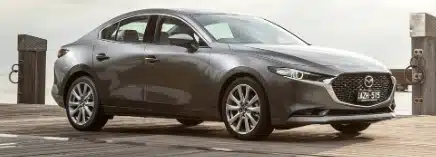
We love the zoom-factor of the Mazda 3 sedan for its sleek sexy style, safety rating, fuel economy and great resale price. A little research showed us that used prices range from $10K+. Not too shabby at all!
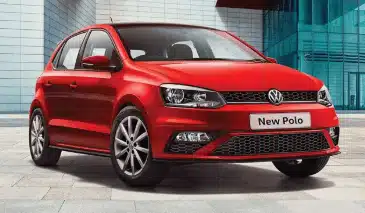
Getting in and out of parks is easy in the Volkswagon Polo. It’s cute as a button, features 5-Star ANCAP safety rating and its size means there’s less potential for lots of distracting passengers. Plus, it’s priced from just $18,990 new. What’s not to love?
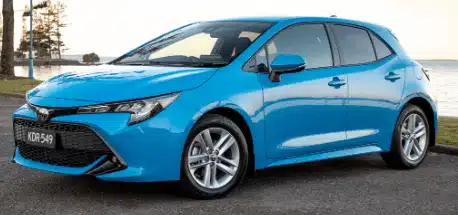
Adaptive cruise control and lane departure alerts make the Toyota Corolla a safe, affordable and reliable option. And despite the competition in the market – Toyota continues to be one of the highest selling car brands in Australia, so resale isn’t a problem.
Looking for more options? There are plenty of buyers guides out there, such as this one for best used cars under $10,000 and this one on the top five cars sold in Australia.
Do your research alongside your teen, communicating as you go. It will make the decision process smoother and will help you reach an agreement everyone is happy with.
At PD Insurance we know car shopping can be overwhelming, so we hope this guide has given you the confidence to go out and find the best car for your teenager. Need more help? Why not print this car buying checklist and handy list of questions to ask your dealer, and take them too.
Share On:

